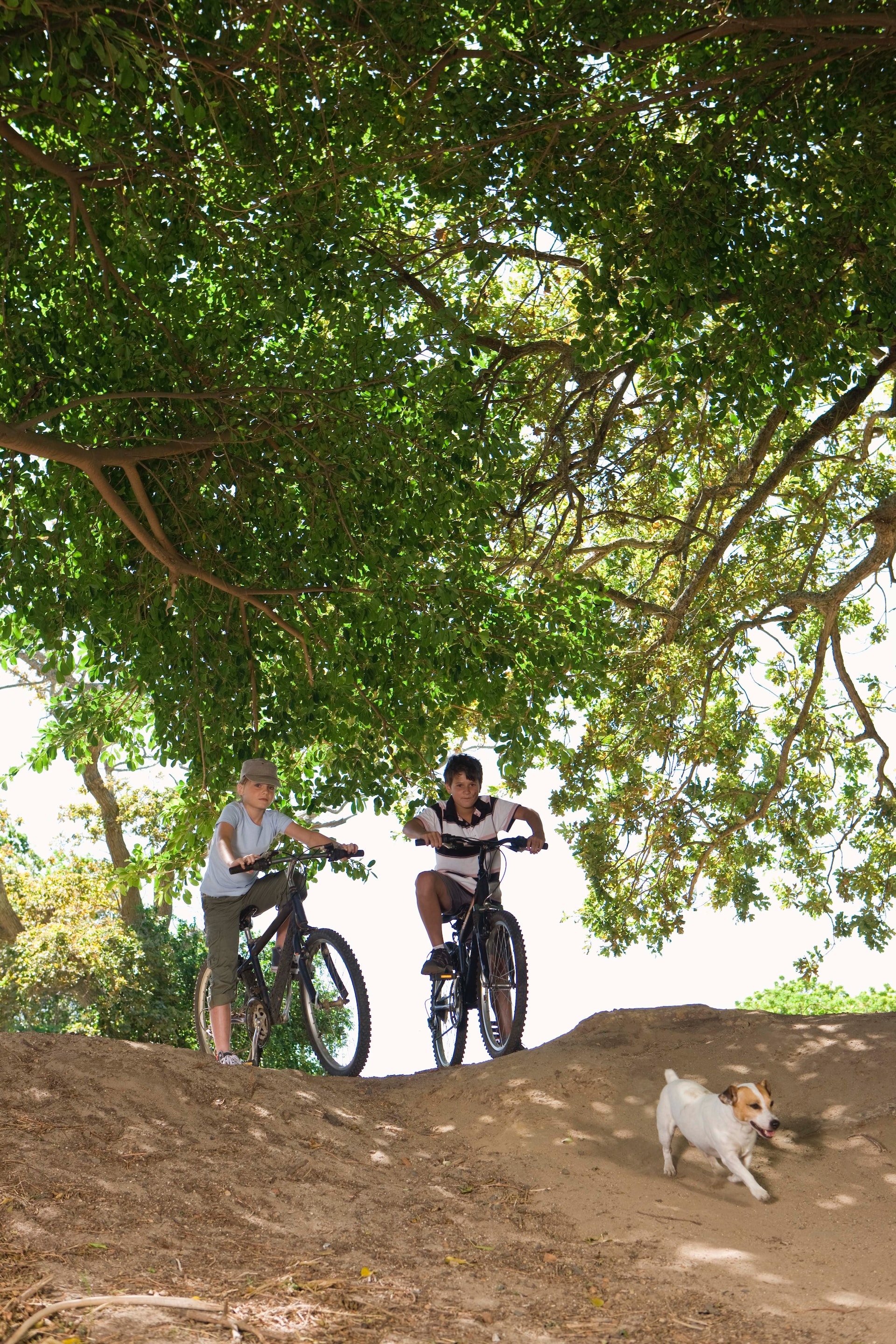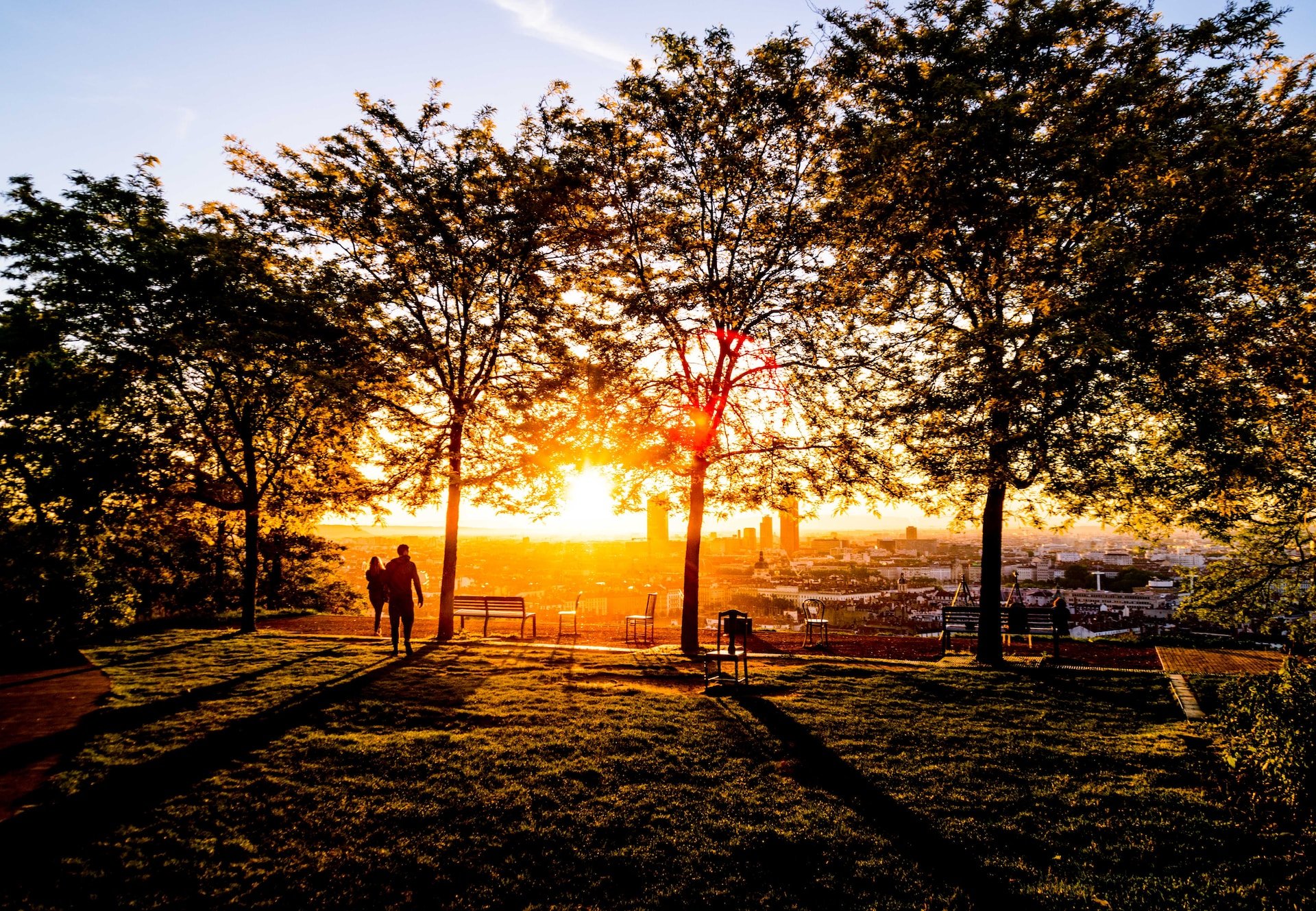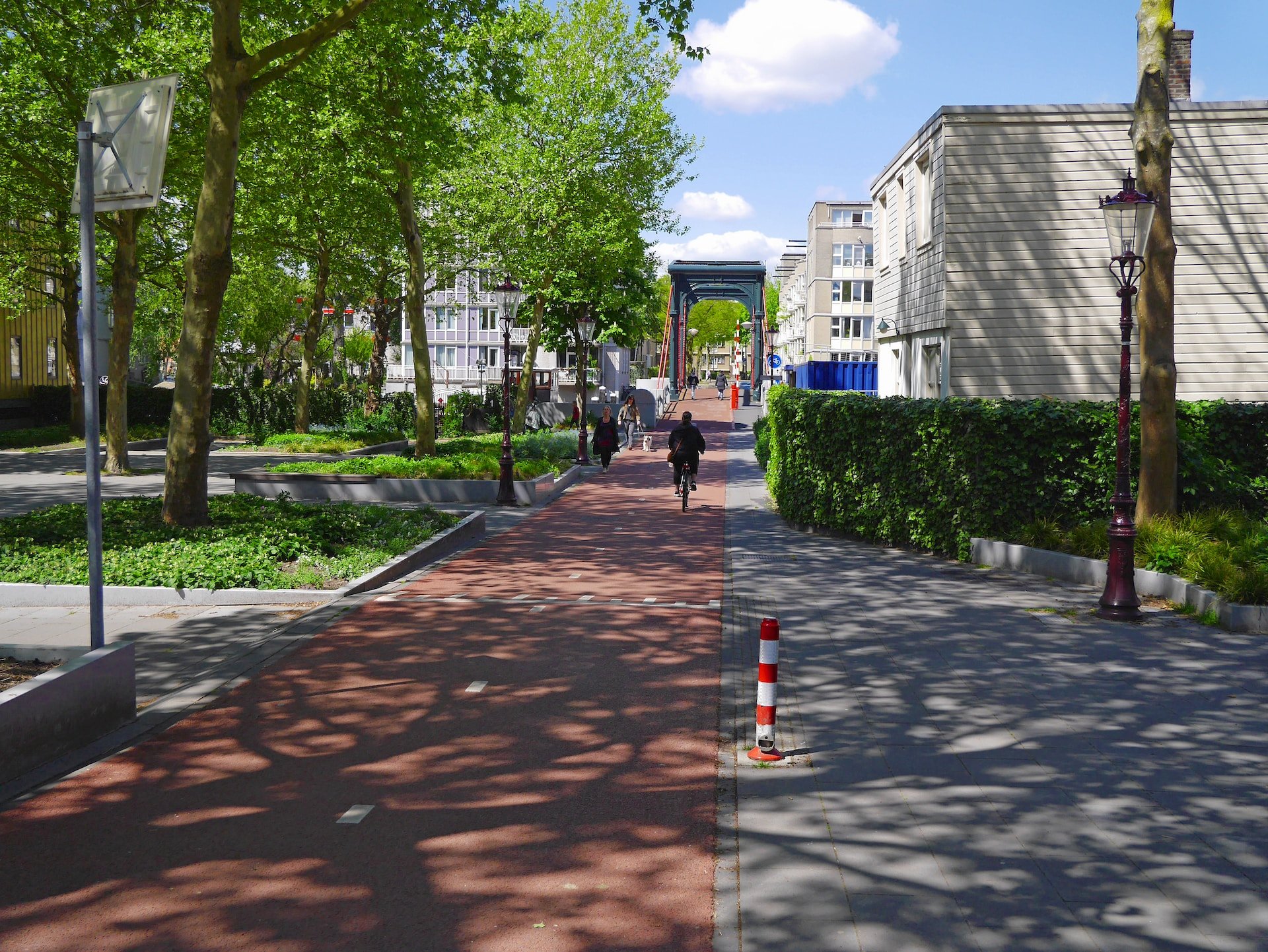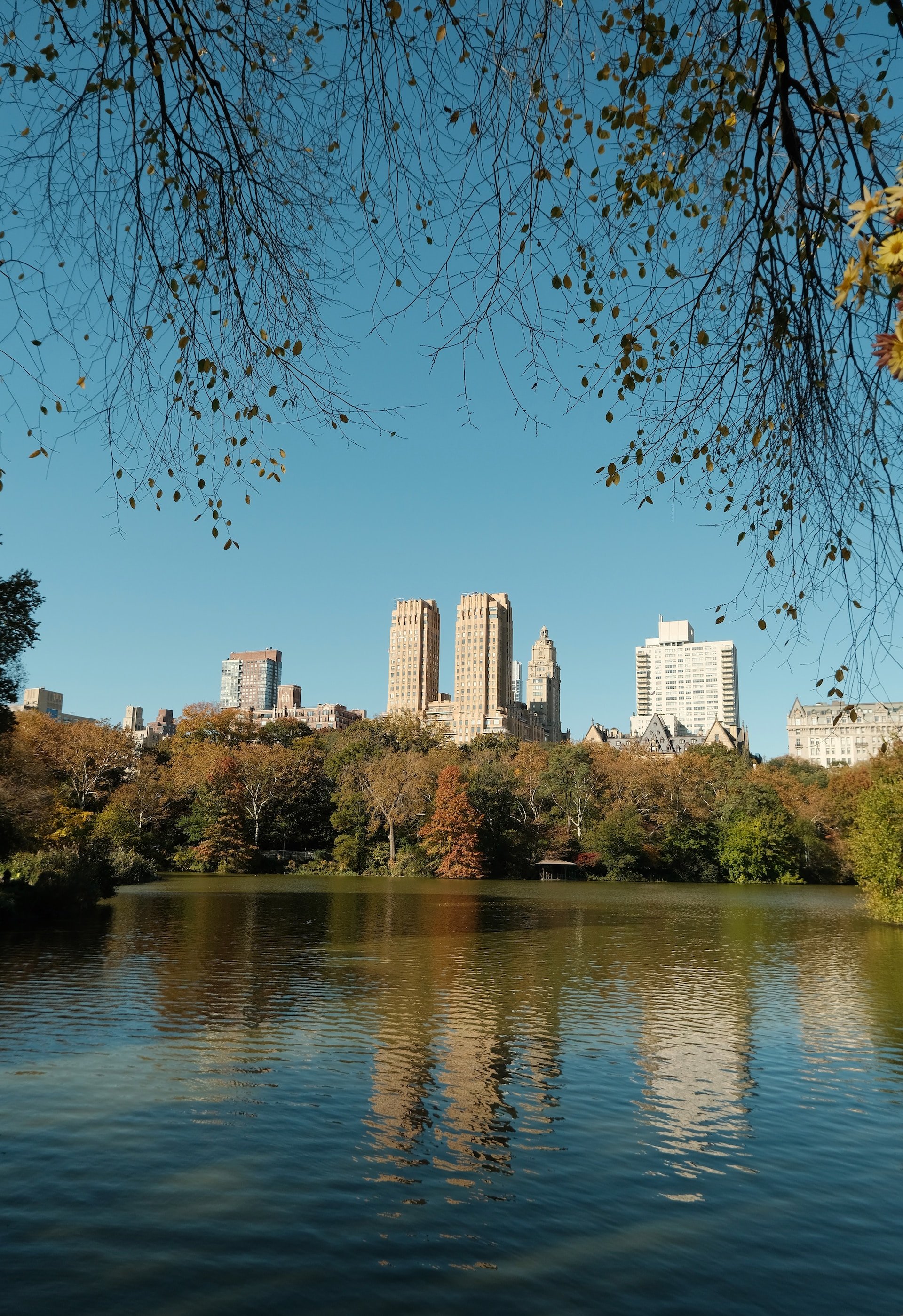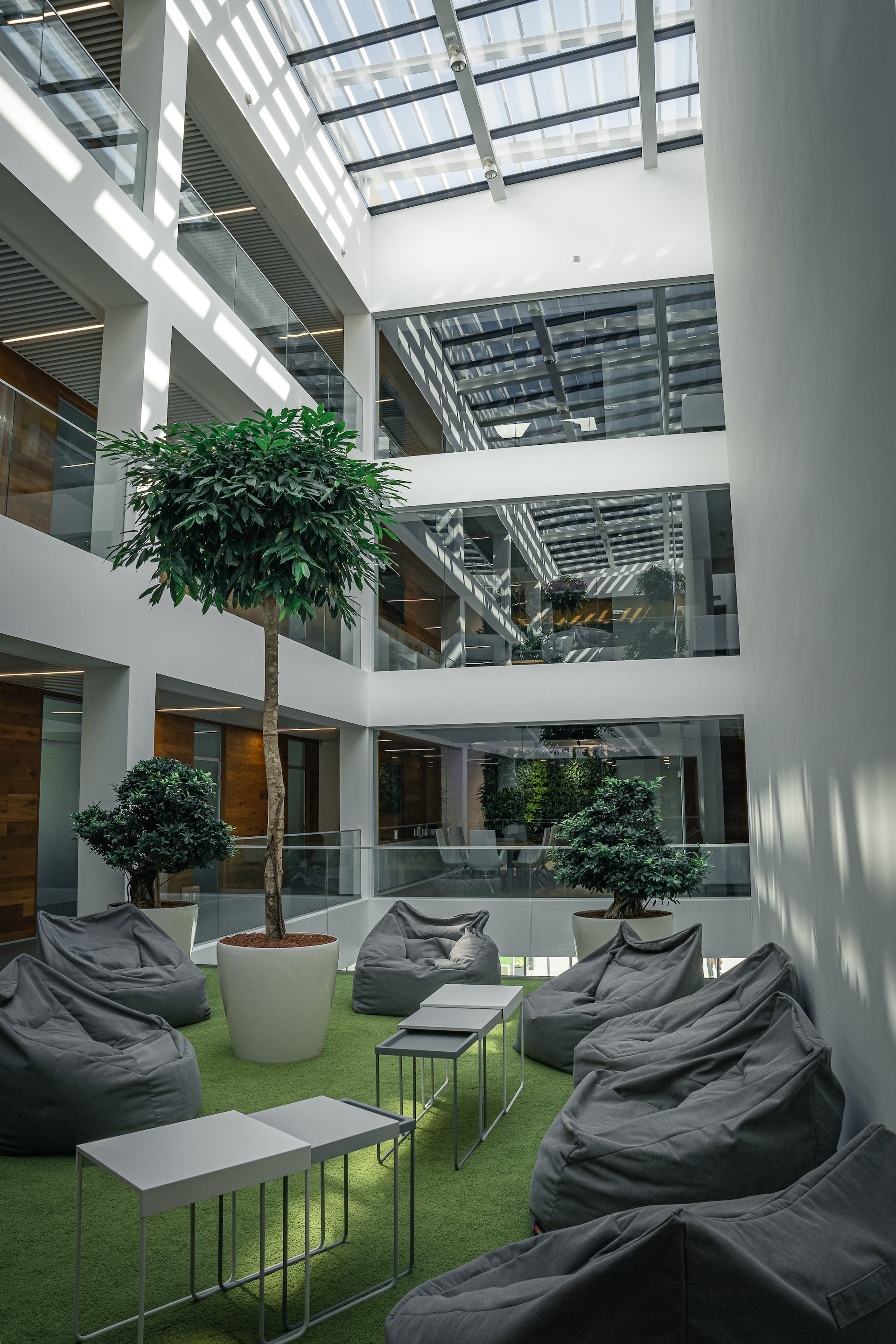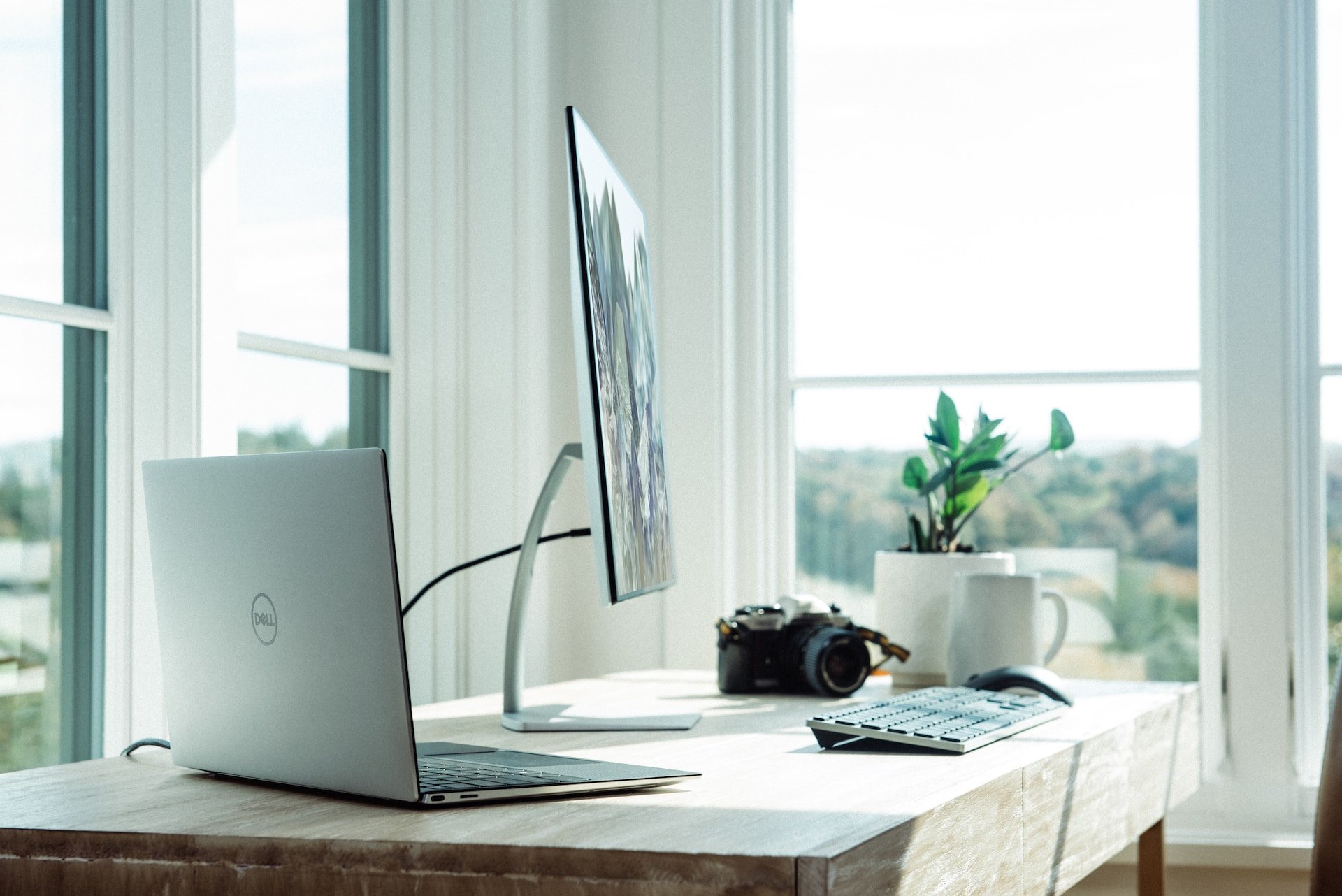What is Biophilic Design?
From time immemorial we have been connected to the earth, to the land, to the wind, the rain, the sun, nourishing ourselves from the abundance of fruits and seeds around us, listening to the leaves rustle, watching the birds fly in formation above our heads as they head for different climes, feel the ice cold water in the rivers, or enjoy the grass beneath our feet as we sit and talk around a fire.
As a species, the human race NEEDS a connection to nature.
The most obvious way is by getting outside and communing directly with nature, a regular dose of nature does wonders for mental and physical health, general wellbeing and so many other aspects of our lives.
But we spend most of our lives inside, at home, in an office (when we can get there!), in a shop, warehouse, school, hospital, hotel, and so on surrounded by white walls, plastics, TV noise, fluorescent lighting... Many of us operate in cities or towns, there’s concrete, asphalt, cars, cacophonies, hardly any parks or trees, birds are minimal and life is, well, running on empty.
The distance from where our inherent biological connection to the world and ourselves is currently, is a thousand miles away from where it needs to be in many instances.
So this is where Biophilic Design comes in. Biophilia is the “love of life, living things”, plants, animals, insects, us, air, flowers, sounds, textures…. In interior design this is often represented directly, for instance by bringing plants in, encouraging natural light and fresh air or by its virtual representation or mimicking of nature, so printed views, using colours from nature, soundscaping or improving acoustics. In urban planning, this is about incorporating trees, parks, wildlife corridors, biodiversity, encouraging engagement with nature and communities through pathways and so on
Scientists and psychologists have, since the 1960s, identified the enormous benefits that living with nature confers on us, but it is only now that interior and exterior design is really starting to celebrate this progressive trend to lessen, not only our environmental impact, but also to enhance our well-being.
Through our Journal of Biophilic Design you can learn more about the medical research conducted on the impact biophilic design can have on not only the well-being of your staff, patients and families but also your budgets.
A Super Short history of Biophilic Design
Erich Fromm
Erich Fromm was the first to coin the term “biophilia” — long before it became popular in architecture and design.
In his 1964 book The Heart of Man: Its Genius for Good and Evil, Fromm defined biophilia as:
“The passionate love of life and of all that is alive; it is the wish to further growth, whether in a person, a plant, an idea, or a social group.”
For Fromm, biophilia was not about design or nature exposure per se — it was a psychological orientation, a life-affirming attitude, contrasted with its opposite: necrophilia, a love of death and destruction.
Key Ideas from Fromm:
Biophilia is an ethical and psychological stance, not just a preference for nature.
It reflects a deep emotional connection to life — plants, people, creativity, and organic growth.
Healthy individuals are drawn toward biophilic behaviors, nurturing life and vitality.
Unhealthy societies, in contrast, foster alienation and necrophilic tendencies.
Fromm, Erich. The Heart of Man: Its Genius for Good and Evil. Harper & Row, 1964.
This is where he first introduces and defines biophilia.Fromm, Erich. To Have or To Be? (1976)
He revisits the idea of biophilia as a fundamental human drive tied to being and growing.
Influence:
Fromm's concept of biophilia laid the philosophical groundwork for later thinkers like Edward O. Wilson, who adapted it to biology and ecology in his 1984 book Biophilia. Wilson shifted the focus from ethics to evolutionary psychology— proposing that humans are innately drawn to nature because of our biological roots.
E.O.Wilson
In 1984 the biologist, naturalist and double Pulitzer Prize winner, Edward O. Wilson defined the term biophilia as “the innate tendency [in human beings] to focus on life and lifelike process… Our existence depends on this propensity, our spirit is woven from it, hopes rise on its currents.”[1] In other words, as humans we love nature, we come from it, are part of it and we respond positively to it. To shield ourselves away from nature is like removing light from our world. The benefits of having a simulation of nature in our working day environment as well as in our homes are huge and as designers we can be inspired by and embrace this trend.
A biophilic environment enhances our lives and uplifts our mindset, helping us focus, it fortifies our immune and emotional systems on a neural level and for those of us who are in bad shape can boost our well-being including the “neuro-endocryne and immunological system”[2]
E.O. Wilson is a foundational figure in the modern understanding of biophilia, especially as it relates to evolutionary biology and human behaviour. While Erich Fromm introduced biophilia as a psychological and ethical concept, Wilson gave it scientific grounding in the natural sciences.
His Seminal Book: Biophilia (1984)
Synopsis:
In Biophilia, Wilson argues that humans possess an innate biological affinity for life and lifelike processes — a love of nature that is rooted in our evolutionary development.
"Biophilia... is the innately emotional affiliation of human beings to other living organisms. Life around us is part of our humanity."
— E.O. Wilson, Biophilia
He weaves together scientific observation, philosophical reflection, and personal experience to show how our deep-seated connection to nature is essential for our well-being, creativity, and even survival.
Key Themes in the Book:
Evolutionary Origins:
Our love of nature is genetically encoded — it helped our ancestors survive by recognizing patterns in landscapes, animals, and ecosystems.Nature and Emotion:
Encounters with natural elements trigger emotional and cognitive responses, from calmness to fascination.Biodiversity and Ethics:
Protecting life on Earth isn't just about resources — it's an ethical imperative tied to our very identity.Human Development:
Interacting with nature is vital to child development, creativity, and psychological health.Loss of Connection:
Modern life risks severing this connection, which could lead to emotional and cultural impoverishment.
Why he is so important to Biophilic Design:
Wilson’s work laid the scientific and conceptual foundation for later applications of biophilia in architecture, urban planning, and design.
Stephen Kellert, who collaborated with Wilson, took Wilson’s biological theory and translated it into design principles.
Terrapin Bright Green’s framework builds on Wilson’s core insight — that people feel better in environments that echo the forms, functions, and systems of nature.
Summary of Wilson’s Contribution:
Primary References:
Wilson, E.O. (1984). Biophilia. Harvard University Press.
→ Foundational text introducing the biophilia hypothesis.Wilson, E.O. (1993). The Biophilia Hypothesis (co-edited with Stephen Kellert).
→ A collection of essays that expand the theory with contributions from psychologists, ecologists, and philosophers.Wilson, E.O. (2002). The Future of Life. Vintage.
→ Advocates for biodiversity and touches again on human-nature relationships.
Stephen Kellert
Stephen Kellert, a pioneer in the field of biophilic design, outlined a set of six key principles (or elements) and accompanying attributes that guide the incorporation of nature into the built environment to improve human health and well-being. These are widely referenced in architecture, urban planning, and interior design.
Kellert's Principles of Biophilic Design
Kellert’s framework is organised into three broad categories, each with specific elements:
1. Direct Experience of Nature
This involves actual contact with natural elements.
- Light – natural lighting and variations that mimic natural patterns.
- Air – natural ventilation, airflow variability.
- Water – presence of water (e.g., fountains, ponds).
- Plants – indoor plants, green walls, gardens.
- Animals – aquariums, bird feeders, or even pets.
- Weather – experiences of rain, wind, sun.
- Natural landscapes and ecosystems – views and access to nature.
- Fire – fireplaces or fire pits (symbolic or actual).
2. Indirect Experience of Nature
This refers to representations or simulations of nature.
- Images of nature – artwork, photos, or videos.
- Natural materials – wood, stone, leather, bamboo.
- Natural colors – earth tones and hues found in nature.
- Simulated natural light and air – dynamic lighting, airflow mimicking nature.
- Naturalistic shapes and forms – organic, biomorphic forms in design.
- Evoking nature through design – using patterns and textures reminiscent of nature.
3. Experience of Space and Place
This focuses on how spatial configurations affect our sense of connection to nature.
- Prospect and refuge – views to the outside combined with sheltered, safe spots.
- Organized complexity – rich but ordered environments (like a forest).
- Integration of parts to wholes – visual and spatial coherence.
- Transition and hierarchy – gradations between different spaces.
- Mobility and wayfinding – intuitive navigation using nature-based cues.
- Cultural and ecological attachment to place – evoking local context and heritage.
Kellert emphasized that biophilic design isn't just about making spaces look "green." It's about creating environments that resonate with our innate connection to nature, which can improve cognitive function, physical health, emotional well-being, and productivity.
Terrapin Bright Green Research / Bill Browning and Catie Ryan
1. Nature in the Space
This refers to direct, physical, and ephemeral presence of nature in a space.
Examples:
Visual Connection with Nature – windows with views, plants indoors.
Non-Visual Connection with Nature – sounds, smells, textures (e.g., birdsong, flowers).
Non-Rhythmic Sensory Stimuli – subtle and random nature cues (e.g., rustling leaves, moving shadows).
Thermal & Airflow Variability – changing air, humidity, or temperature like you’d experience outdoors.
Presence of Water – fountains, streams, or visuals/sounds of water.
Dynamic & Diffuse Light – daylight that changes with time and season.
Connection with Natural Systems – awareness of natural processes (e.g., seasonal changes, plant growth).
2. Natural Analogues
This means indirect experiences of nature through representations and naturalistic design elements.
Examples:
Biomorphic Forms & Patterns – shapes and patterns found in nature (e.g., fractals, spirals, honeycombs).
Material Connection with Nature – natural materials (wood, stone, leather) and textures.
Complexity & Order – rich sensory detail with underlying order (like leaf veins or tree branches).
3. Nature of the Space
This focuses on spatial configurations that evoke the way humans experience spaces in nature.
Examples:
Prospect – clear, unobstructed views across a space or landscape.
Refuge – cozy, sheltered spots that feel protected.
Mystery – partially obscured views that invite exploration.
Risk/Peril (with a safe outcome) – design elements that feel a little daring but safe (e.g., glass floors, cantilevered walkways).
Why It Matters:
These patterns are designed to support cognitive performance, emotional well-being, and physiological health. They help create spaces where people feel more engaged, comfortable, and inspired.
Overlap: Where Kellert and Terrapin Connect
Terrapin’s 14 Patterns of Biophilic Design and Stephen Kellert’s Biophilic Design principles overlap, but they have slightly different emphases and levels of abstraction. Here's a very soft touch breakdown of how they align and complement each other:
1. Direct Experience of Nature (Kellert) ⇄ Nature in the Space (Terrapin)
Both frameworks highlight the importance of actual contact with nature. Which for us here at the JBD too, is the most important manifestation of Biophilic Design.
Both focus on multisensory experiences, like light, sound, and air, as key to reconnecting with nature.
2. Indirect Experience of Nature (Kellert) ⇄ Natural Analogues (Terrapin)
Here, both discuss how representations of nature evoke similar responses to the real thing. This offers I would argue one of the most beautiful opportunities for designers, city planners, creatives. Looking at how nature is shaped, coloured, formed, made of, patterned and see how we can mimic this in product design, choice of paint, wall coverings, furniture, lighting, textiles or even curves in street and corridor design. It’s a simple framework to make sure we bring this connection to nature into our homes, schools, hospitals and urban design wherever and however we can. Think of it like a tick list!
Both emphasize biomimicry, materials, and visual patterns that recall nature without being literal.
3. Experience of Space & Place (Kellert) ⇄ Nature of the Space (Terrapin)
This is about spatial experience and psychology — how environments make us feel safe, curious, and oriented. These are sometime overlooked, especially the mystery and risk and peril. But in nature we are exposed to these most of the time. There are no straight lines in nature, also we lived in caves for a reason so we can be safe but be able to look out (prospect and refuge), there was peril every day when we went out foraging (risk and peril) but we came home safe. Forests are complicated, and we had to learn to navigate our way through new territories or intriguing pathways that might lead to water (mystery). How could you bring these elements into the actual fabric of your building?
Shared interest in evolutionary instincts — like the desire for a view (prospect) and shelter (refuge).
Differences in Emphasis
Maybe another simple way of putting it:
Kellert gives you the "why" — the philosophical and evolutionary reasoning behind biophilic design.
Terrapin/Browning gives you the "how" — a usable design checklist with 14 tangible patterns.
They work beautifully together, with Kellert providing the foundation and Terrapin offering the much needed and essential toolkit backed up by economic evidence and academic research.
View the FREE Guide to Biophilic Design written by Dr Sally Augustin and kindly sponsored by Hermann Miller so it is freely available for you. This was published to commemorate the first Biophilic Design Conference held at the Barbican in November 2024.
Some references:
[1] Wilson, Edward O. (1984). Biophilia. Cambridge: Harvard University Press. ISBN 0-674-07442-4.
[2] Caperna A., Serafini S. (2015). Biourbanism as new epistemological perspective between Science, Design and Nature. In Architecture & Sustainability: Critical Perspectives. “Generating sustainability concepts from an architectural perspective”, KU Leuven – Faculty of Engineering, Belgium). ISBN 9789462920880.
Terrapin Bright Green – 14 Patterns of Biophilic Design Outlines key patterns to incorporate nature into built environments.Terrapin Bright Green
Oliver Heath Design School - Biophilic Design in the Home (use code JBD10 to get 10% off too!)
Biophilic Cities Focuses on urban planning that fosters connections between people and nature.biophiliccities.orgrootedinnature.org+2biophilicdesigninstitute.com+2naava.io+2
Living Future – Biophilic Design Toolkit Offers a comprehensive toolkit for implementing biophilic principles.Living Future - A future worth living
Biophilic Design Institute Provides resources and courses to integrate biophilic design into practice.
Read the Biophilic Design Guide, by Dr Sally Augustin
The earliest humans had it tough. What with all of their scraping by, foraging for fruits and vegetables, killing the occasional mammoth for lunch, and not becoming the next meal of any lion or tiger or bear that happened to be wandering by.
The places where our ancestors could be comfortable for those challenging primordial aeons were very particular sorts of spots and, via an astounding collection of sensory memories, we continue to find the same types of areas very comfortable spaces to spend time today.
So comfortable, in fact, that even now our brains as well as our bodies feel good and work well when we’re in built spaces that share the core design elements of those long, long ago locations. Our stress levels fall, which helps our bodies feel good. As our moods get better and our comfort levels rise, we do a great job with analytical reasoning, creativity, and getting along with others, just for starters. We feel that we can achieve what we’ve set out to do, we have some power over the world that surrounds us, and we can mingle with others when we choose. Our minds can be refreshed by experiences we have in biophilic areas.
How can we generate biophilically designed spaces, ones that will do so many good things for our minds and our bodies?
“Biophilic design” sounds like it should be all about plants and gardening, and it is in part—but there’s a lot more to it than vegetation.
In the paragraphs to come, we’ll get into the nitty gritty, the literal how to of indoor biophilic design—there’ll be no extended passages about beauty and conserving the environment here—although how could we possibly be anti-beauty or against saving the planet?
If you’re an outdoor space designer/manager/doer type: Brains are brains, people are people, no matter where they are. The information we’ll cover is completely applicable in your work as well—with obvious modifications—for example, you’ll need to think about curving outdoor paths instead of indoor ones and you’ll be adding scents via actual....
Thank you to Miller Knoll for their kind sponsorship of this book. Edited, layout and illustrations by Dr Vanessa Champion.







